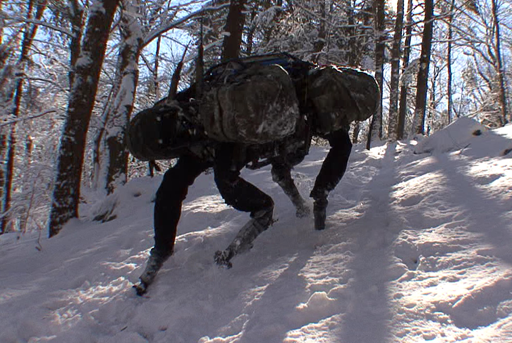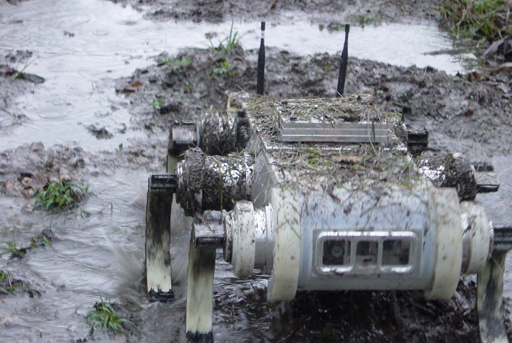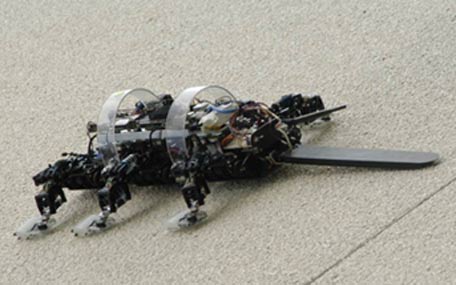- City Fajr Shuruq Duhr Asr Magrib Isha
- Dubai 04:24 05:43 12:19 15:46 18:51 20:09

From a search engine to developing dynamic robots and human simulation Google has definitely gone a long way. Last week it emerged that Google has brought over Boston Robotics – an engineering company that specializes in developing robots for use by the American military.

Boston Dynamics began as a spin-off from the National Academy of Engineering at the Massachusetts Institute of Technology.
Marc Raibert and his colleagues who first developed the robots as part of the Academy founded Boston Dynamics in 1992.

Two decades later what we have is an impressive array of innovative robots, including BigDog, a quadruped robot for travel on rough-terrain, PETMAN, an anthropomorphic robot for testing equipment, RISE, a robot that climbs vertical surfaces, SquishBot, a shape-changing chemical robot that moves through tight space among others.
The company also develops tools for human simulation. DI-Guy is one of its most prominent product used for simulation-based training mainly by the US military for its various applications.
 What does this mean for us ordinary citizens of the world who continue to use Google’s search engine, the Gmail and Android phones and operating system? Will we soon be able to buy one of the scary robots or we will soon be able to see our smartphone transform into a robot.
What does this mean for us ordinary citizens of the world who continue to use Google’s search engine, the Gmail and Android phones and operating system? Will we soon be able to buy one of the scary robots or we will soon be able to see our smartphone transform into a robot.
With new technology at hand, the possibilities for Google are immense.
Here’s a look at some of the robots developed by the Boston Dynamics.
Cheetah robot
Cheetah Robot is the fastest legged robot in the World, surpassing 29 mph.
The robot just like the animal has an articulated back that flexes back and forth on each step, increasing its stride and running speed.
What you see in the video is a robot running on a high-speed treadmill and powered by an off-board hydraulic pump.
Wild Cat
The next generation Cheetah robot is the WildCat and is designed to operate untethered.
WildCat a four-legged robot being developed to run fast on any terrain has so far run at a maximum speed of about 16 mph on flat terrain.
Legged Squad Support robot
LS3 is a rough-terrain robot designed to go anywhere and helping those travelling on foot (soldiers) carry their load.
Each LS3 carries up to 400 lbs of gear and enough fuel for a 20-mile mission lasting 24 hours.
LS3 is connected by a GPS through which it can be guided to a dedicated location. It also automatically follows its leader using computer vision.
Big Dog
Big Dog is one of the most advanced rough terrain robot and can walk, run, climbs and carry a heavy load.
BigDog is powered by The quadrupled robot is powered by an engine that drives a hydraulic actuation system.
The robot is the size of a large dog or small mule - about 3 feet long and 2.5 feet tall and weighs 240 lbs - and its legs are articulated like an animal’s, with compliant elements to absorb shock and recycle energy from one step to the next.
It has multiple sensors connected at various points and is connected to the on-board computer that controls the movement.
BigDog runs at 4 mph, climbs slopes up to 35 degrees, walks across rubble, climbs muddy hiking trails, walks in snow and water, and carries 340 lb load.
RHEx
The six six-legged robot can climb rock fields, mud, sand, vegetation, railroad tracks, telephone poles and up slopes and stairways.
Its body in completely sealed and built in such a way that it can move around in wet weather, muddy and swampy conditions.
It is operated remotely via an RF link that includes a high-resolution video uplink. Visible/IR cameras and illuminators provide front and rear views from the robot.
Sand Flea
Imagine a race car that can even jump up to about 30 feet high.
That’s exactly what the Sand Flea can achieve. It can easily jump over a compound wall and can do so about 25 times with a single charge.
Measuring about 5 kilos the robot uses gyro stabilization to stay level during flight, to provide a clear view from the onboard camera, and to ensure a smooth landing.
Rise
This robot uses feet with micro-claws and can climb vertical terrain such as walls, trees and fences and any textured surfaces.
The 2 kilo robot is 0.25 m long and is designed in such a way that it can changes posture to conform to the curvature of the climbing surface and its tail helps it balance on steep ascents.
Each of RiSE's six legs is powered by a pair of electric motors. An onboard computer controls leg motion, manages communications, and services a variety of sensors, including joint position sensors, leg strain sensors and foot contact sensors.
![]() Follow Emirates 24|7 on Google News.
Follow Emirates 24|7 on Google News.